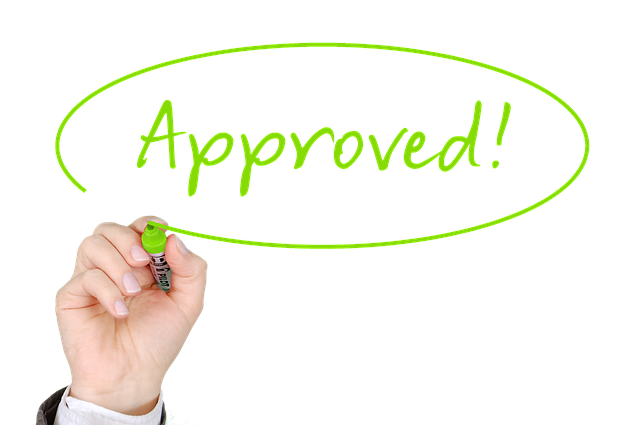Understanding a lender's credit requirements is key to improving eligibility for an equipment loan. Lenders assess borrowers through financial statements, tax returns, and business plans. Required documentation includes personal/business records, bank statements, and equipment appraisals. Ensuring accuracy and completeness demonstrates repayment ability and strengthens the application. Following these tips optimizes the loan process, increasing chances of securing funding for equipment purchases.
“In the world of equipment financing, understanding the intricate dance between credit requirements and robust financial statements is key to securing funding. This article guides business owners through navigating the complex landscape of loan approvals for equipment purchases. From deciphering credit requirements to crafting a compelling loan application, we’ll explore essential practices like gathering accurate financial statements and providing comprehensive documentation. Learn strategies to enhance your eligibility and master tips to maximize your chances of securing the financing needed to fuel your growth.”
- Understanding Credit Requirements for Equipment Loans
- Gathering Necessary Financial Statements for Loan Approval
- What Documentation is Essential for Your Application?
- Strategies to Improve Eligibility for Equipment Financing
- Tips for Crafting a Successful Loan Application
- Maximizing Your Chances of Securing Funding for Your Equipment
Understanding Credit Requirements for Equipment Loans

Understanding Credit Requirements for Equipment Loans is a crucial step in ensuring your loan application tips are well-honed and your eligibility improves. Lenders assess potential borrowers based on several factors outlined in their credit requirements, which typically include financial statements, tax returns, and detailed business plans. The documentation needed can vary between lenders but often includes personal and business financial records, bank statements, and appraisals for the equipment being financed.
When preparing your loan application, it’s essential to ensure accuracy and completeness in all submitted documents. Properly organized financial statements demonstrate a borrower’s ability to repay the loan. Lenders look for consistent cash flow, profitability, and a solid business model that aligns with their risk assessment criteria. Addressing any red flags or gaps in your documentation can also help streamline the loan approval process, making it easier to secure funding for your equipment purchase.
Gathering Necessary Financial Statements for Loan Approval

When applying for an equipment loan, understanding what financial statements and documentation are required is crucial for a smooth loan approval process. Lenders will assess your financial health and stability to determine your eligibility for a loan. Therefore, it’s essential to gather accurate and up-to-date financial statements, including profit and loss reports, balance sheets, and cash flow statements. These documents provide a clear picture of your business’s financial performance and position.
To improve your chances of securing the loan, ensure that all required documentation is complete and organized. Financial statements should cover a consistent period to facilitate comparison and analysis by lenders. Additionally, providing supporting documentation such as tax returns, bank statements, and business registration documents can enhance your application. These tips will not only streamline the loan application process but also demonstrate to lenders that you are well-prepared and serious about managing your equipment loan responsibly.
What Documentation is Essential for Your Application?

When preparing for an equipment loan application, understanding what documentation is essential can significantly improve your eligibility and speed up the loan approval process. Financial statements are a critical component of any loan application, as they provide a clear picture of your business’s financial health. Lenders will want to see detailed balance sheets, income statements, and cash flow statements that accurately reflect your company’s financial position. These documents help lenders assess your ability to repay the loan and manage your finances responsibly.
Along with financial statements, you’ll also need to provide documentation that supports your credit requirements. This may include tax returns, business registration documents, and any other records that demonstrate your business’s stability and profitability. Additionally, gather information about the equipment you plan to purchase, such as detailed specifications, cost estimates, and any warranties or maintenance agreements. These documents not only strengthen your loan application but also ensure a smoother transaction during the acquisition of new equipment.
Strategies to Improve Eligibility for Equipment Financing

Improving your eligibility for equipment financing is crucial when applying for loans. Lenders carefully review financial statements and require specific documentation to assess creditworthiness and determine loan approval. To enhance your chances, focus on maintaining strong financial records and ensuring they are up-to-date. Accurate and detailed financial statements, including income, expenses, and asset details, demonstrate a solid financial standing.
When preparing for a loan application, organize all necessary documentation. This may include tax returns, business licenses, and any existing loan agreements. Lenders often have specific credit requirements, so it’s essential to understand these criteria and provide clear, comprehensive information. Additionally, keeping your financial obligations current and managing debt effectively can significantly improve your eligibility for equipment financing, making the loan approval process smoother.
Tips for Crafting a Successful Loan Application

Crafting a successful loan application for an equipment loan begins with meticulous preparation. Lenders will scrutinize your financial statements to assess your creditworthiness and eligibility, so ensuring accuracy and completeness is paramount. Start by organizing your financial documents, including income statements, balance sheets, and cash flow projections, as these will be critical in demonstrating your business’s financial health.
Next, pay close attention to the credit requirements set forth by lenders. Ensure that your financial statements accurately reflect your business’s revenue, expenses, and asset values. Provide detailed documentation supporting any significant assets or income sources. Additionally, address any areas of concern in your financial history that might hinder loan approval. Consider these steps as part of your eligibility improvement strategy to enhance the chances of a smooth loan application process.
Maximizing Your Chances of Securing Funding for Your Equipment

Securing funding for your equipment purchase doesn’t have to be a daunting task. One of the most effective ways to maximize your chances of loan approval is by ensuring your financial statements are accurate and complete. Lenders will assess your financial health based on these documents, so presenting well-organized and transparent financial statements is key.
Before submitting your loan application, ensure you have all the required documentation in order. This includes tax returns, business registration documents, and any existing bank statements. By demonstrating a solid credit history and meeting the lender’s credit requirements, you significantly improve your eligibility for funding. Reviewing the loan application tips provided by the lending institution can also help streamline the process and increase your chances of a successful outcome.














